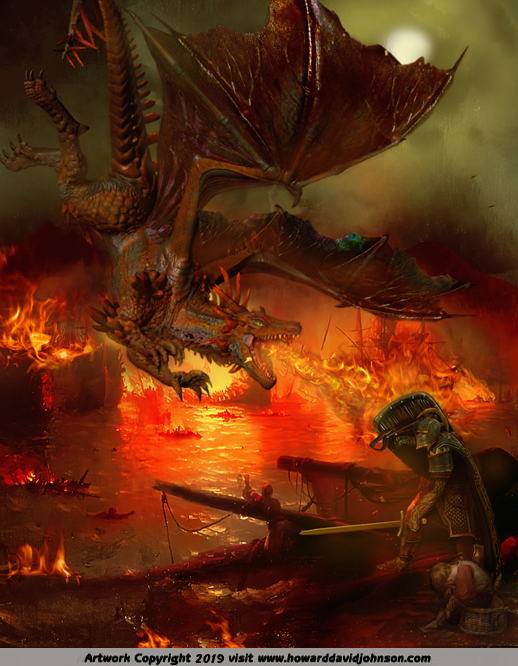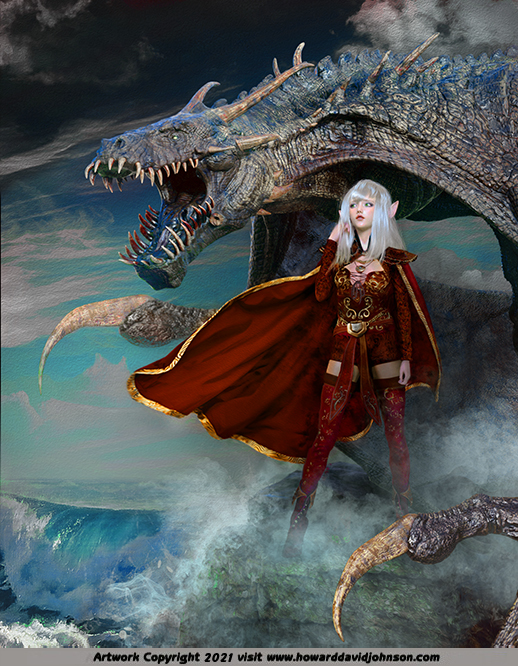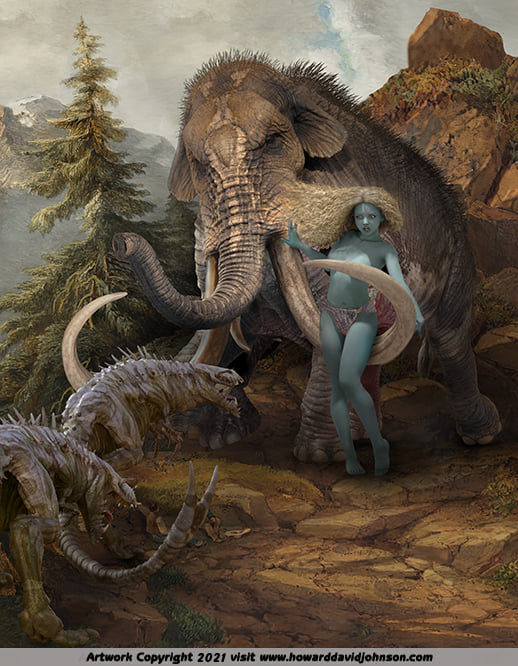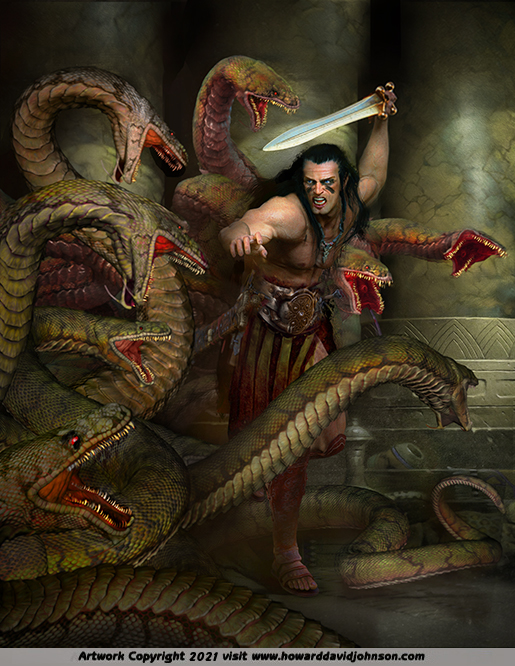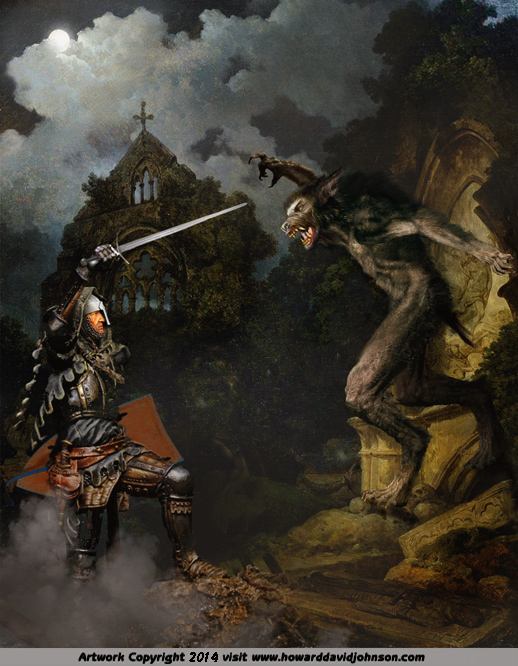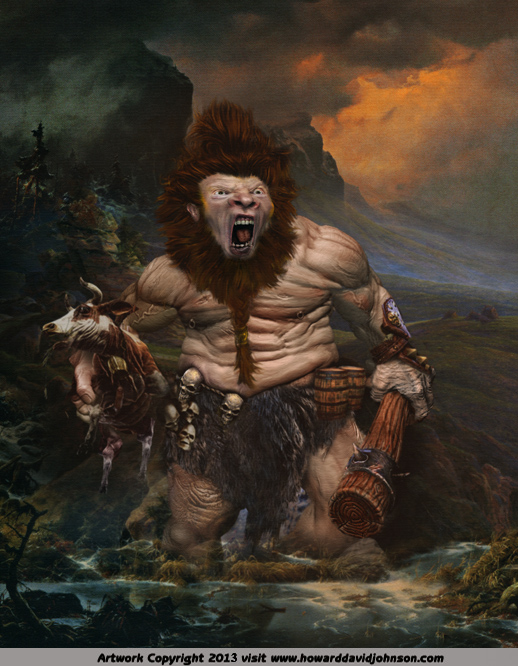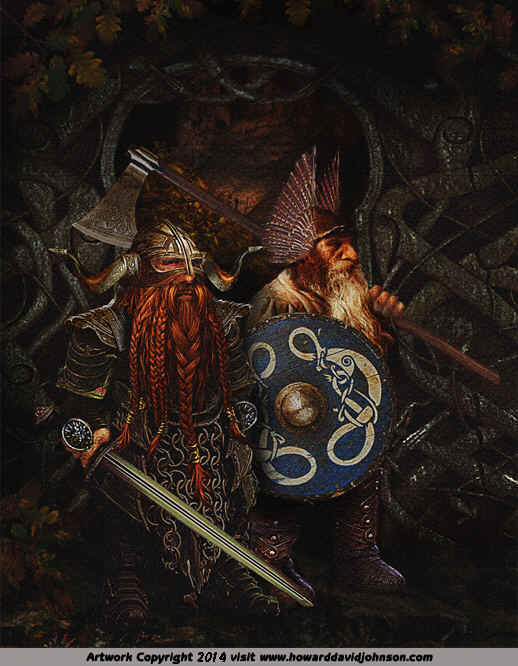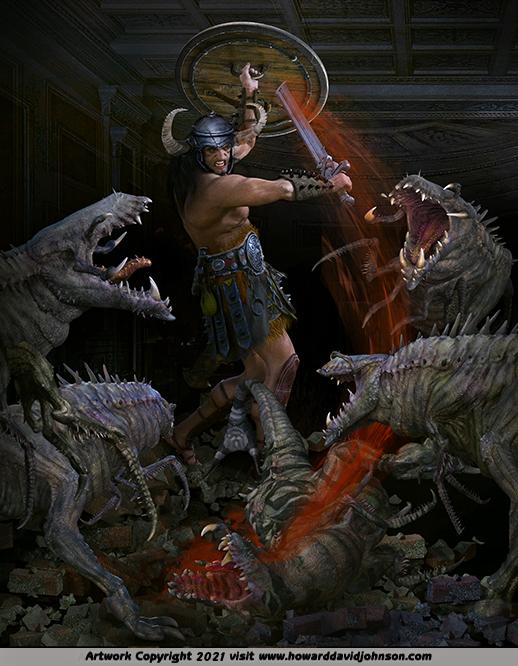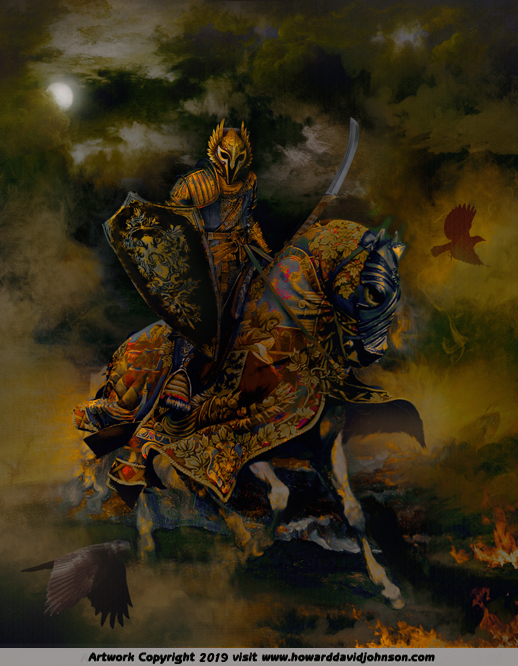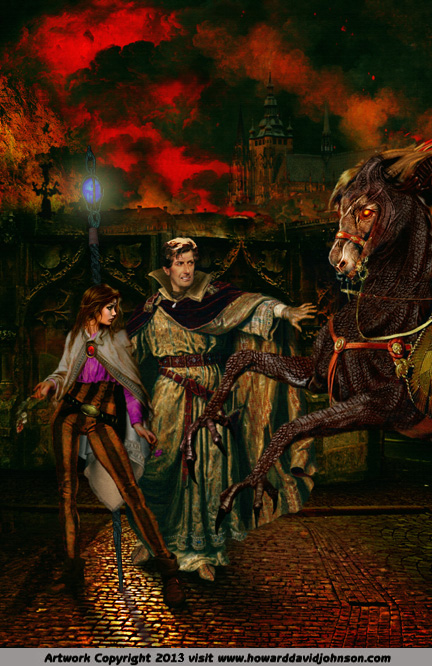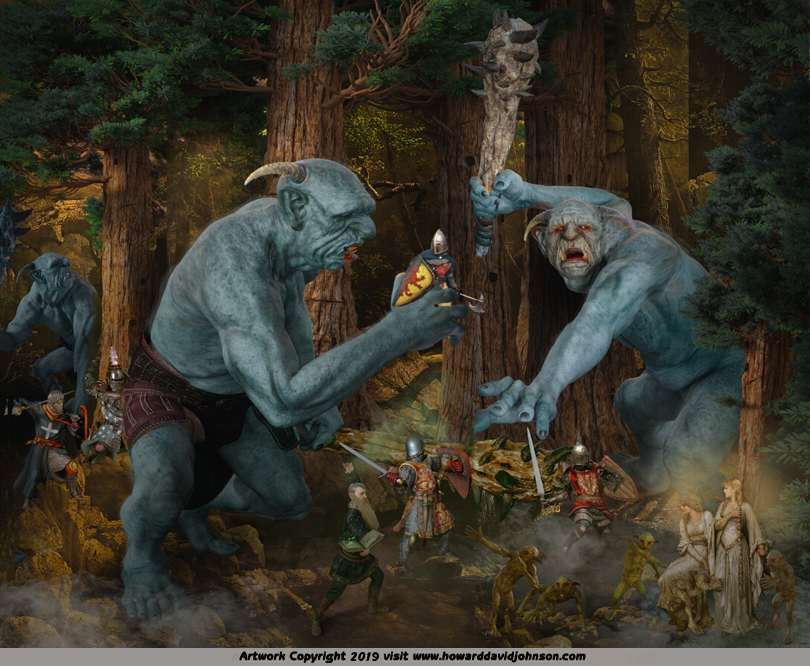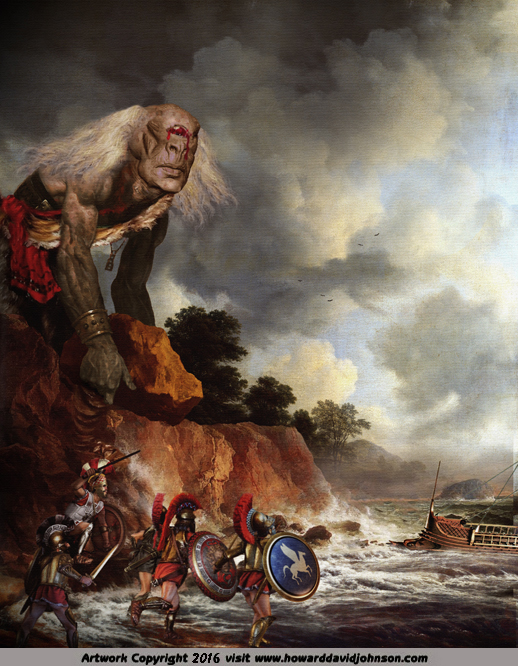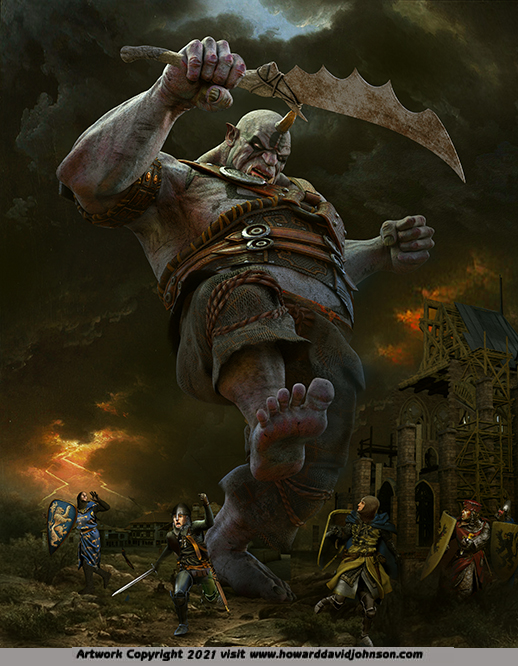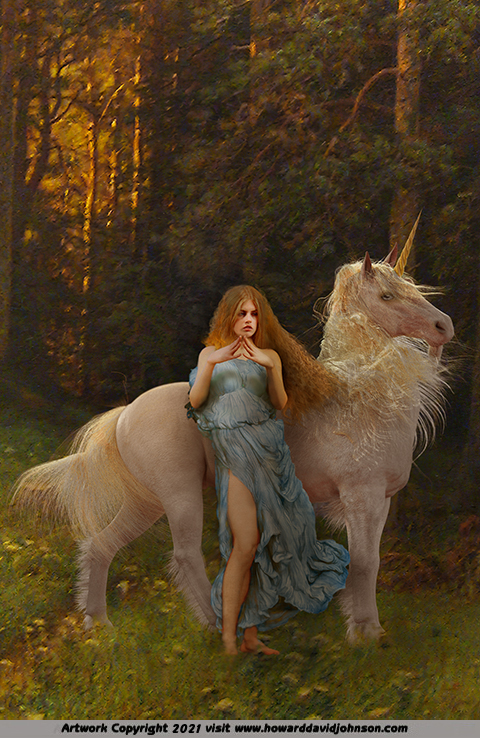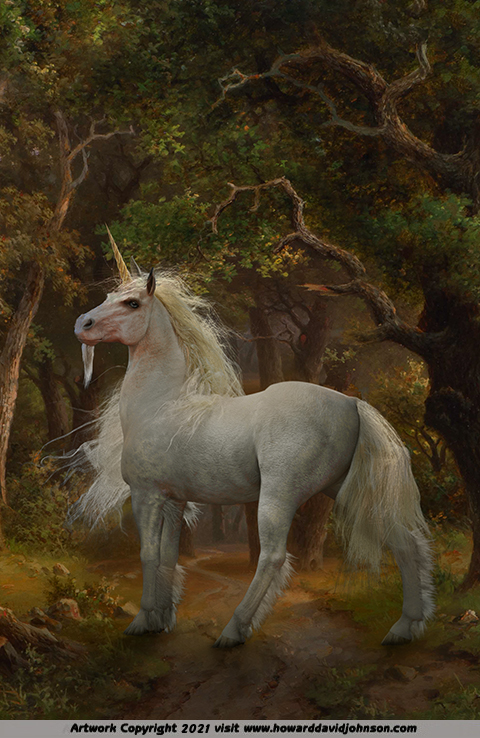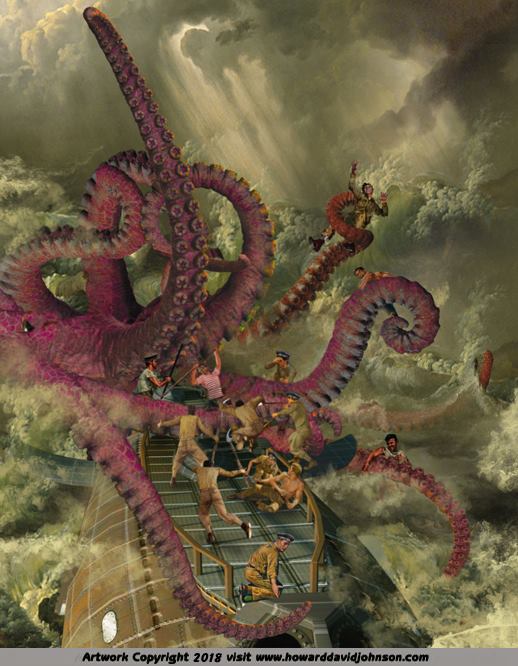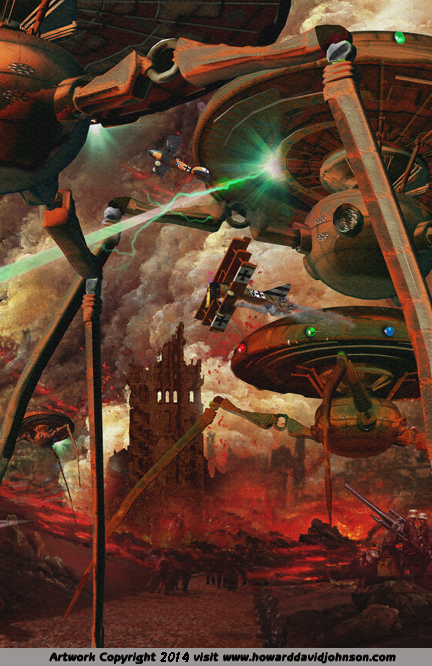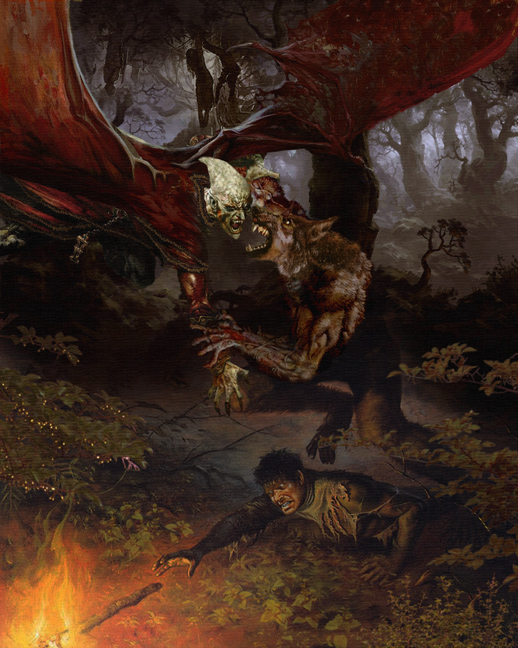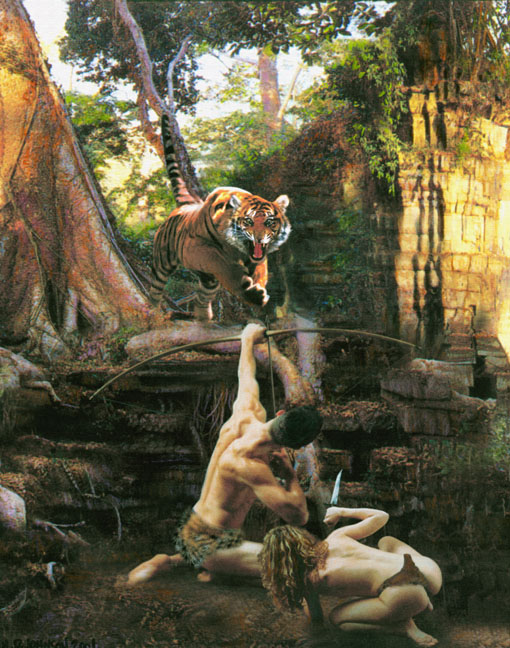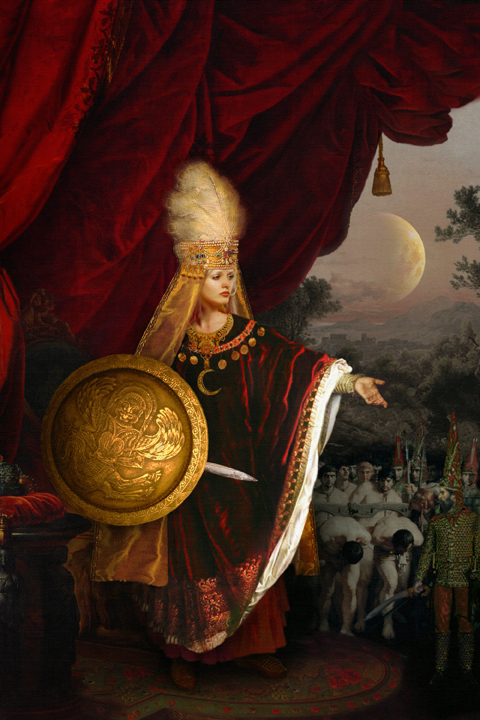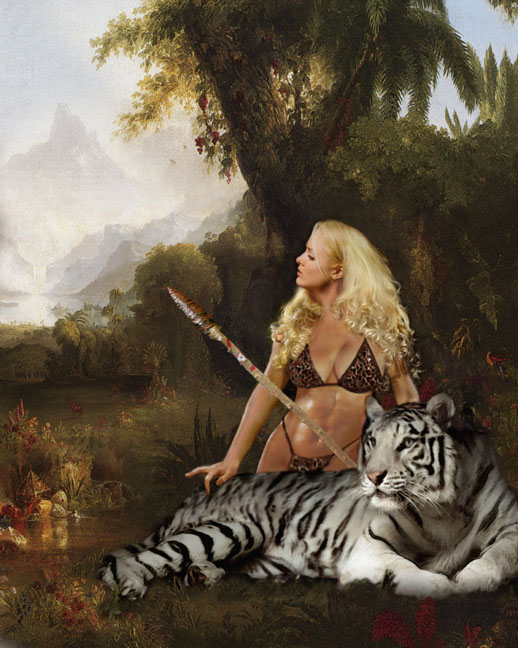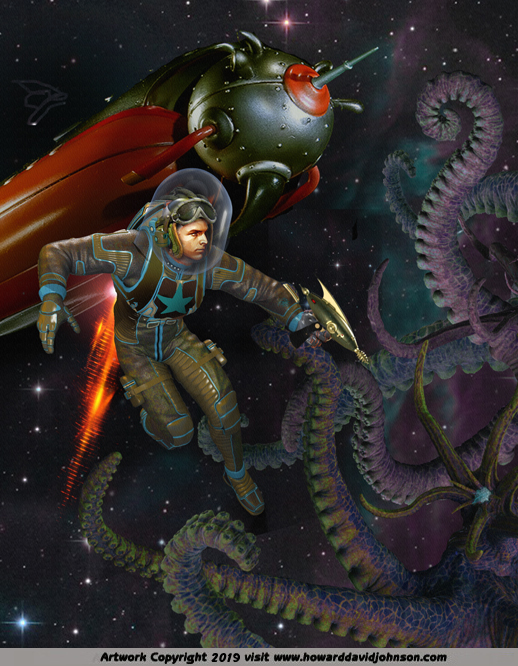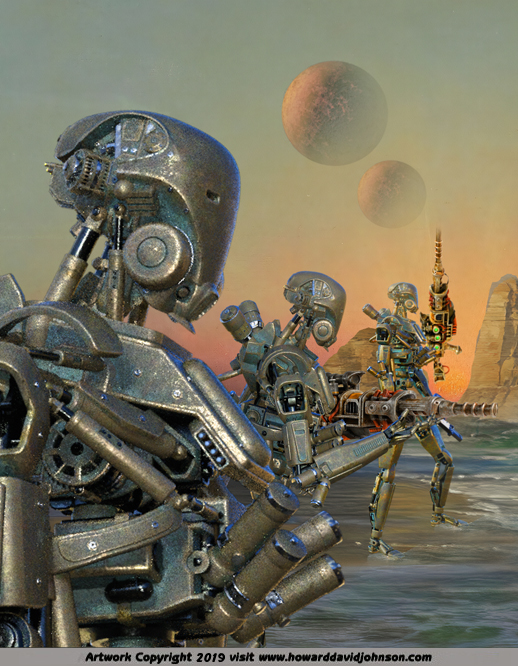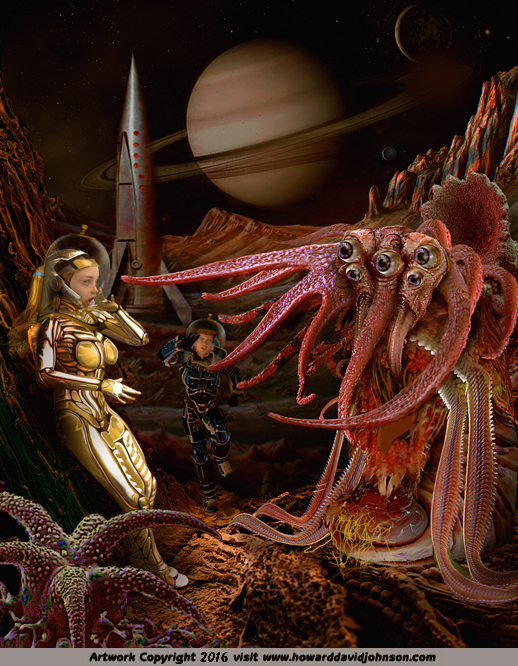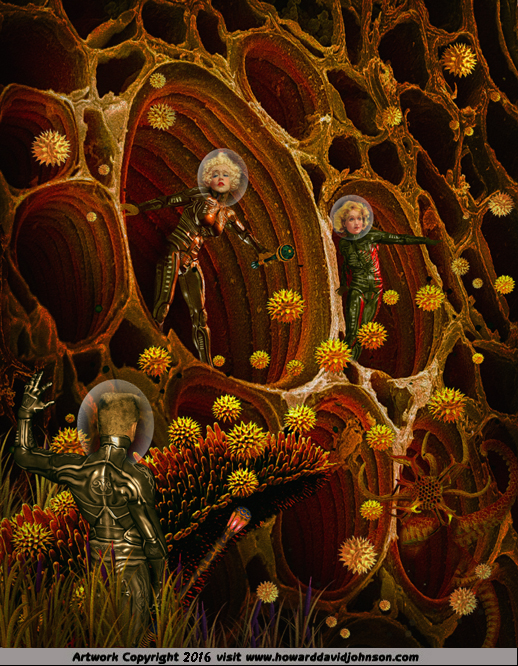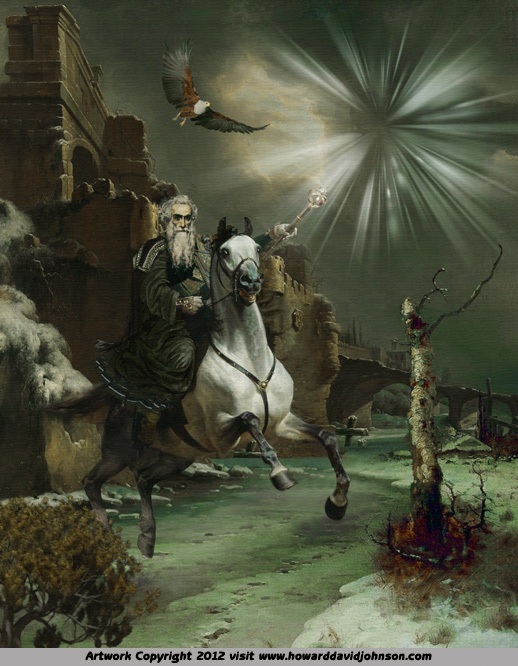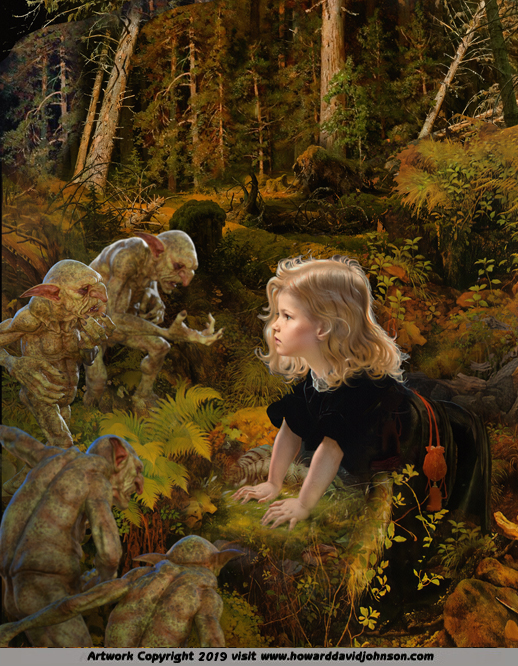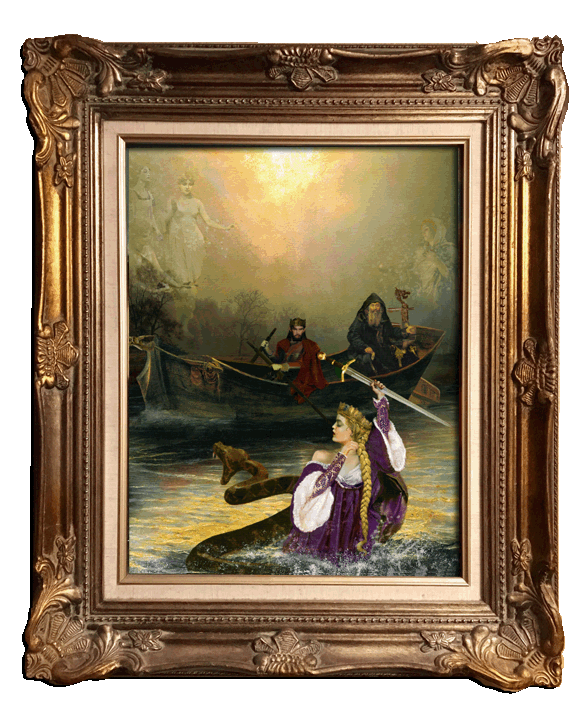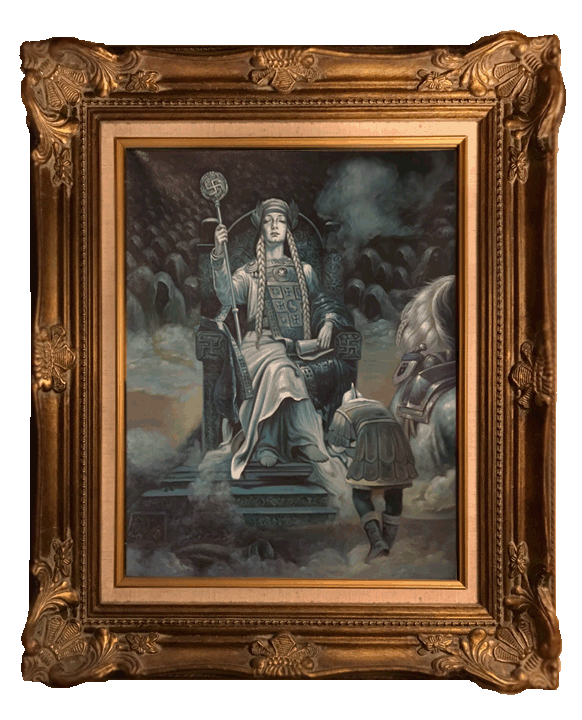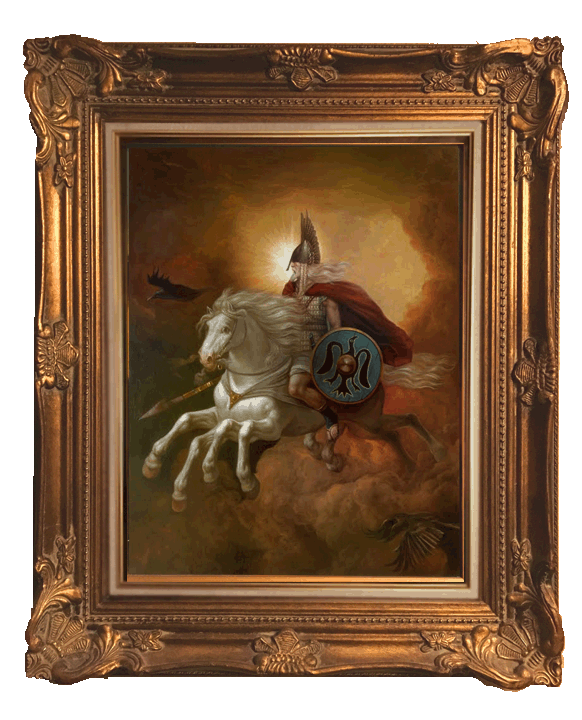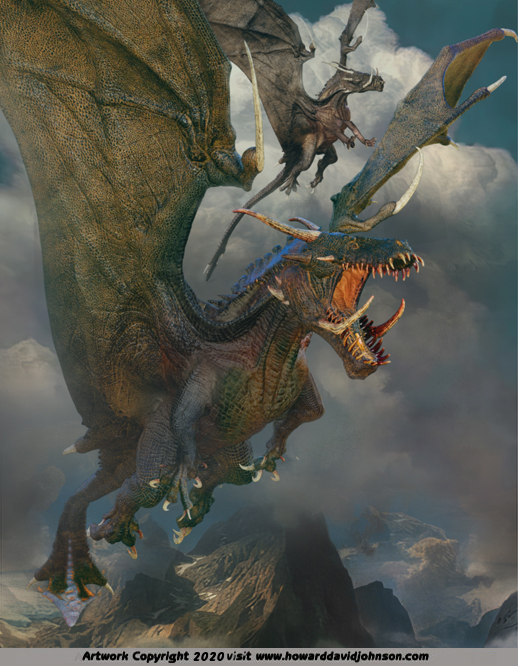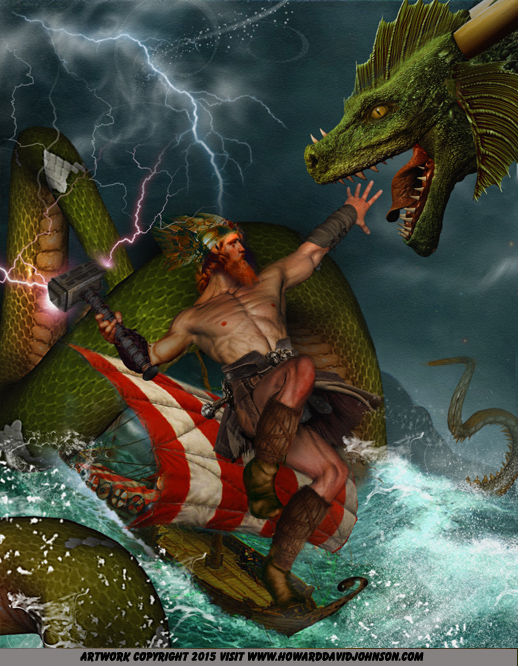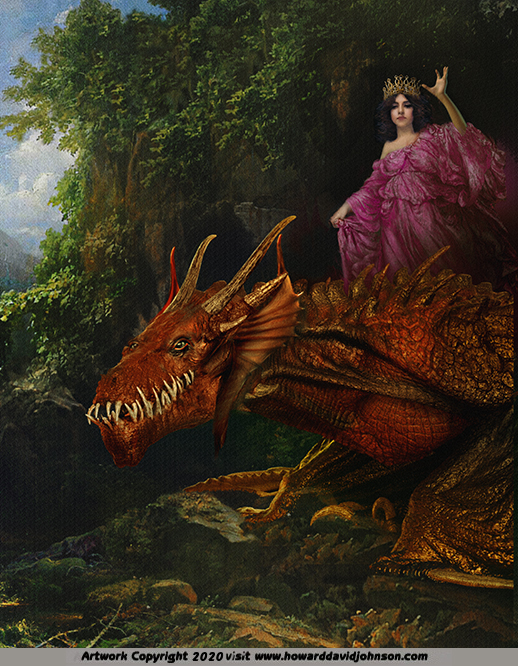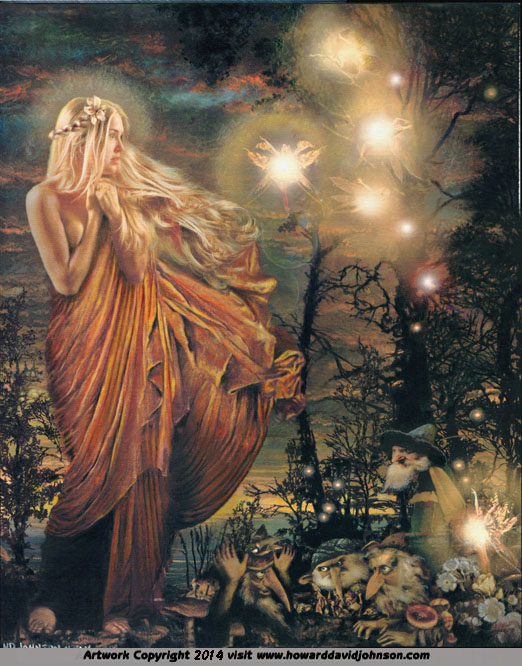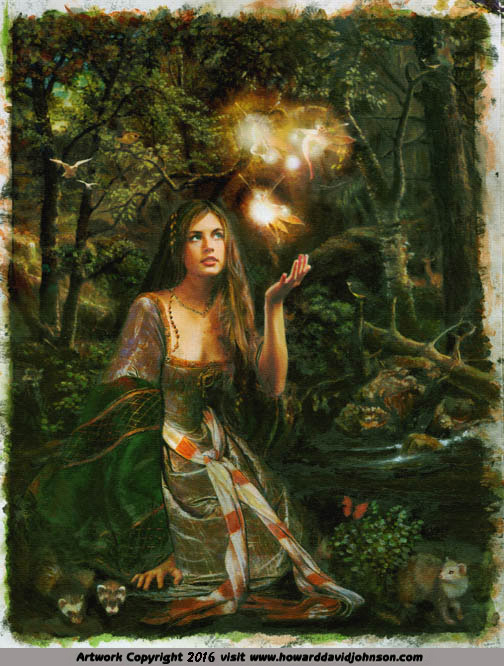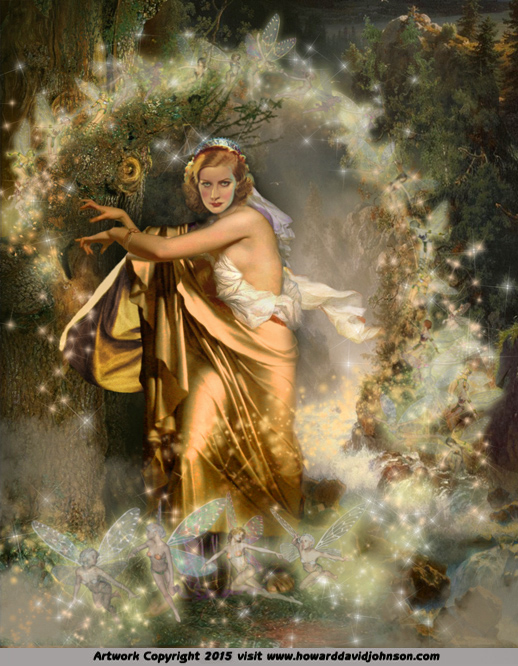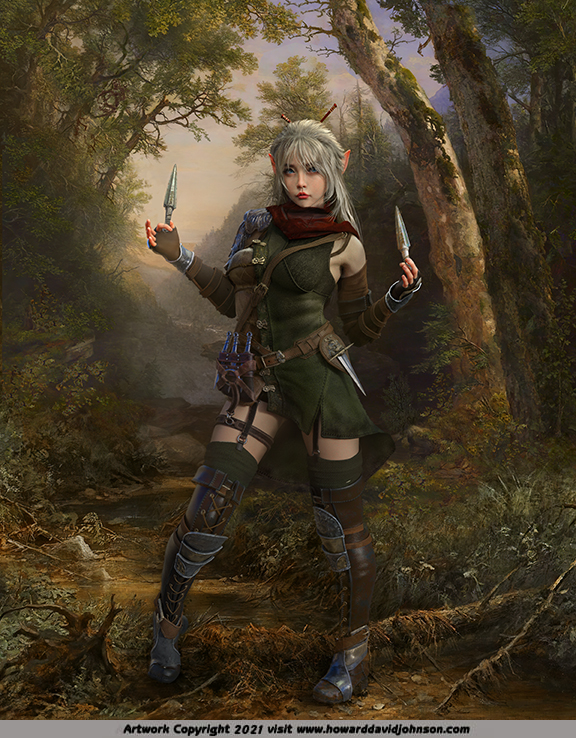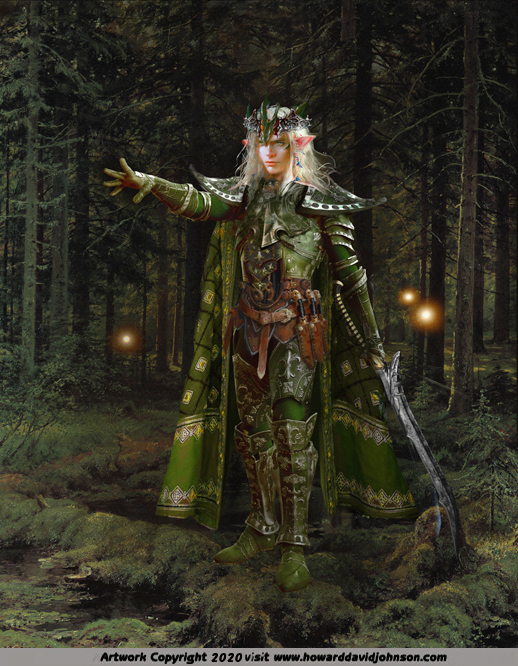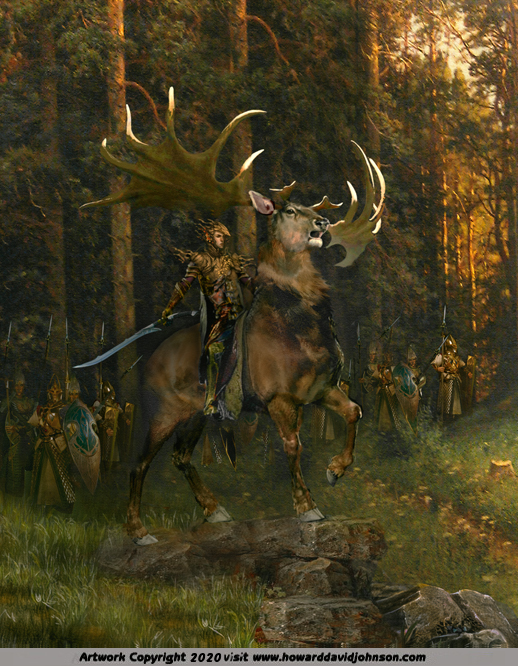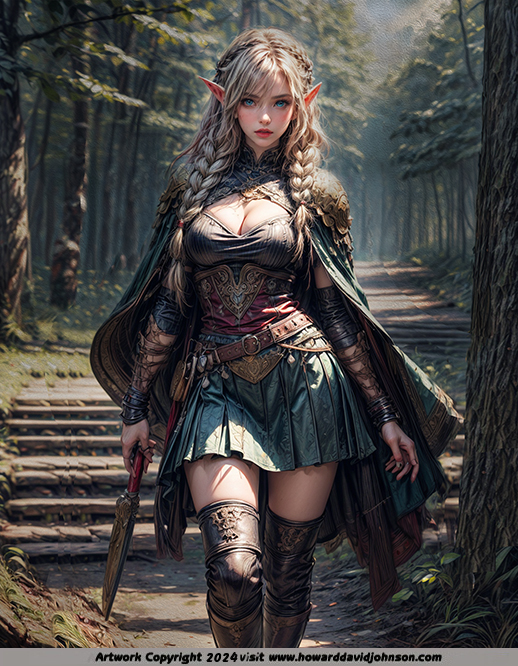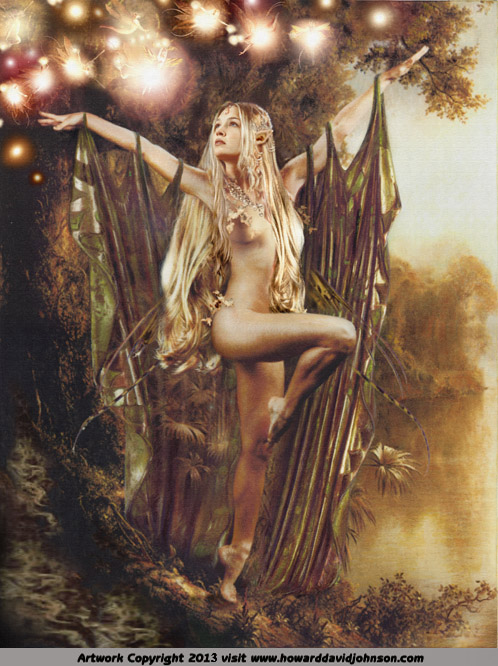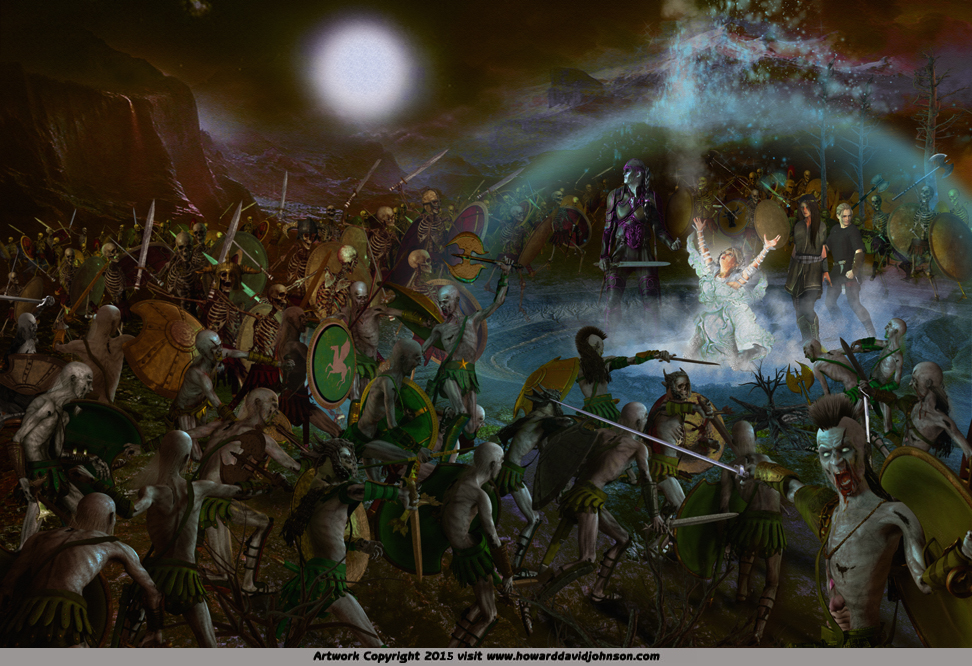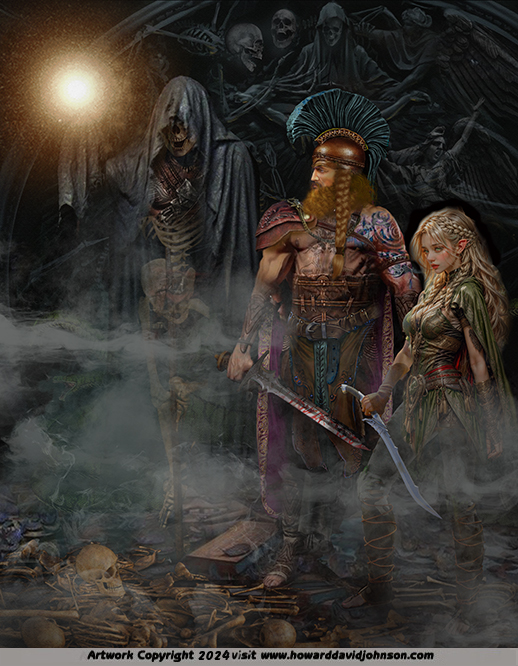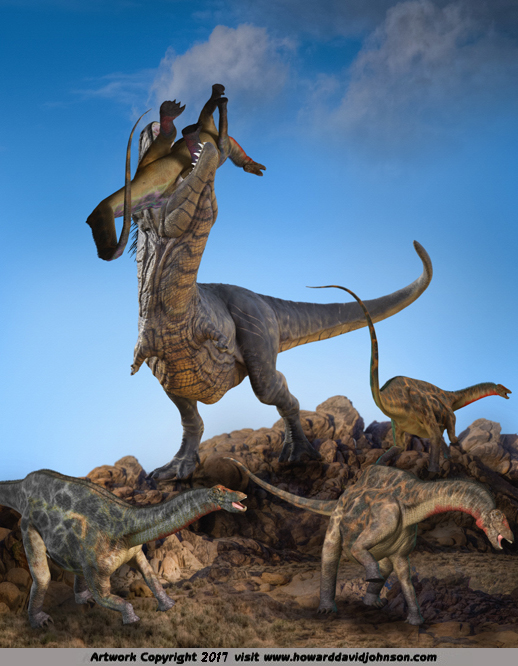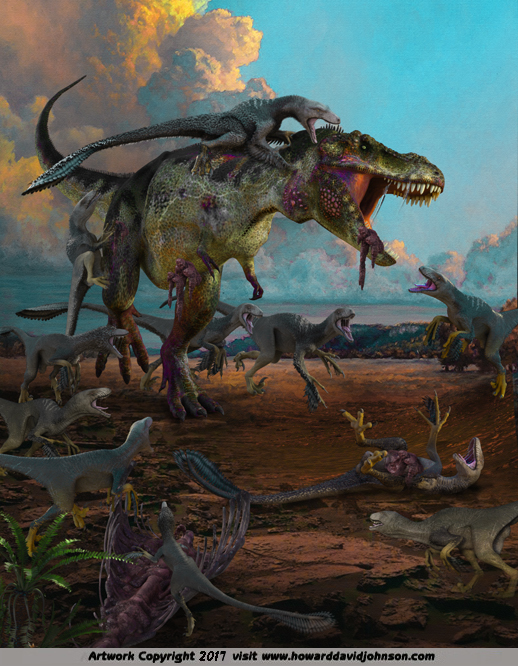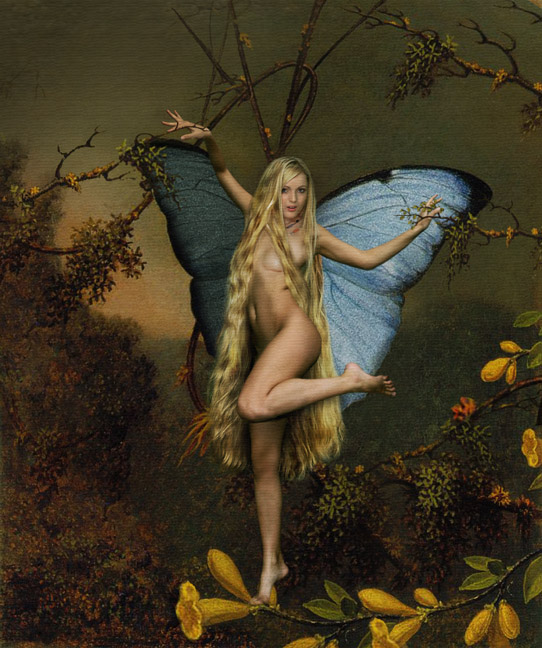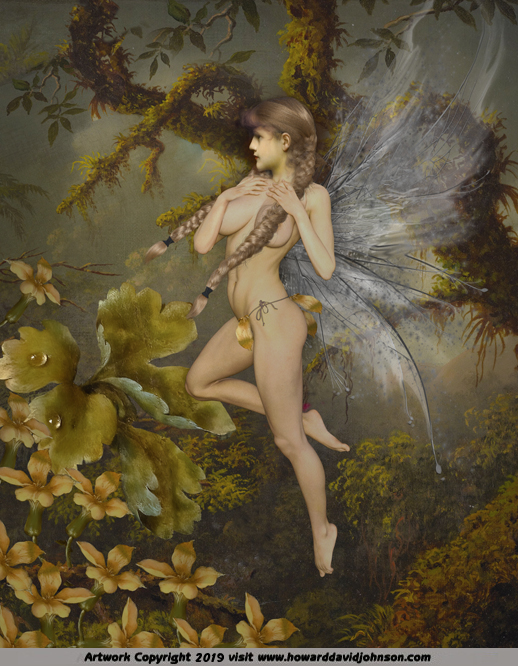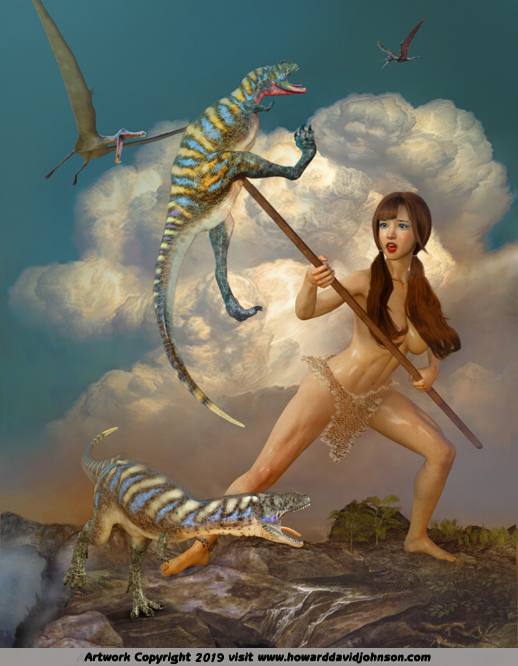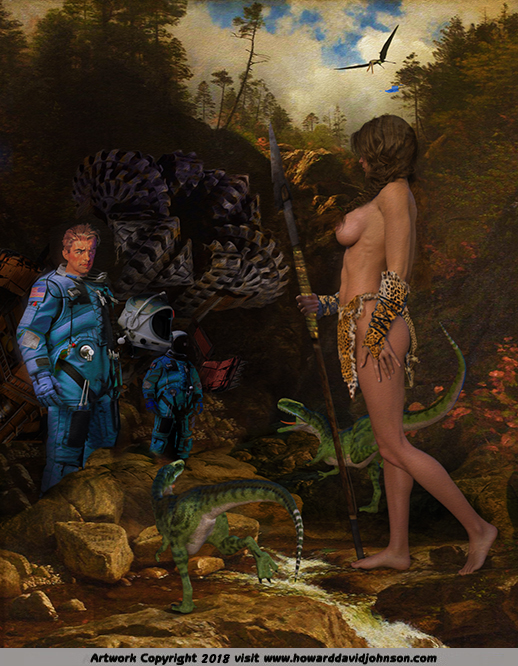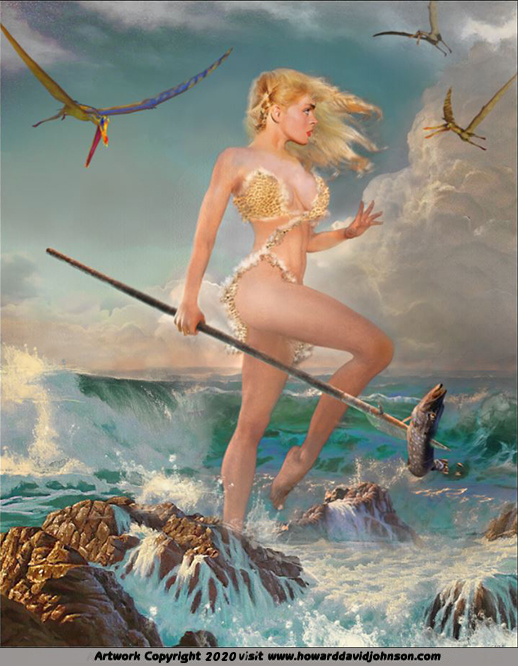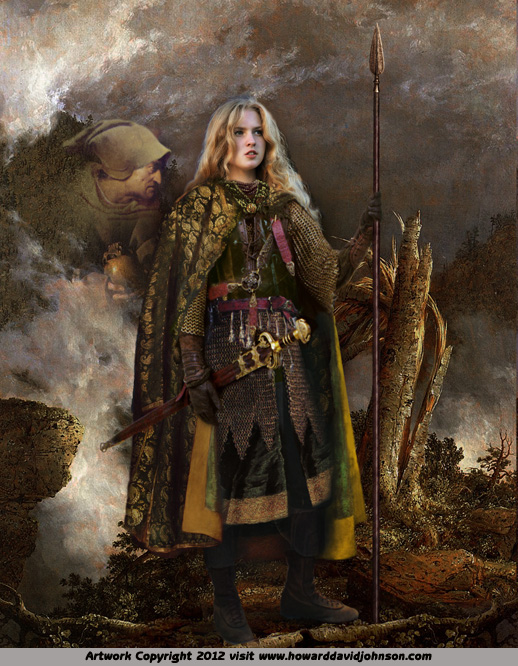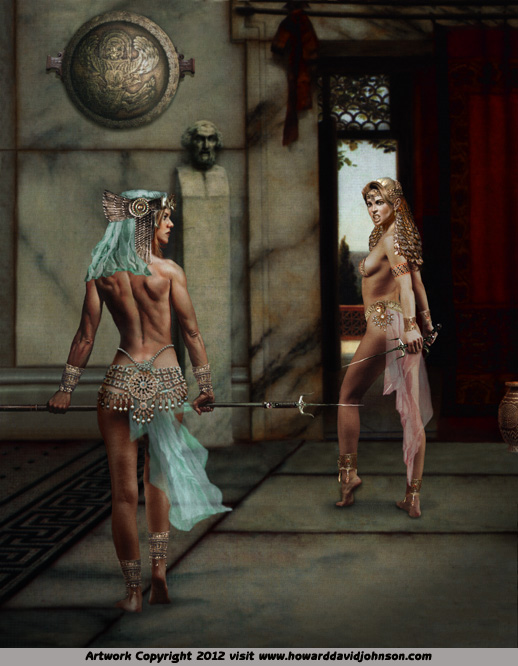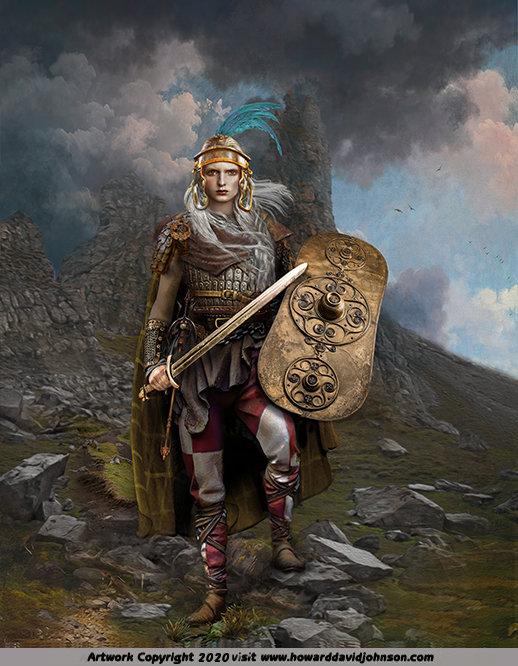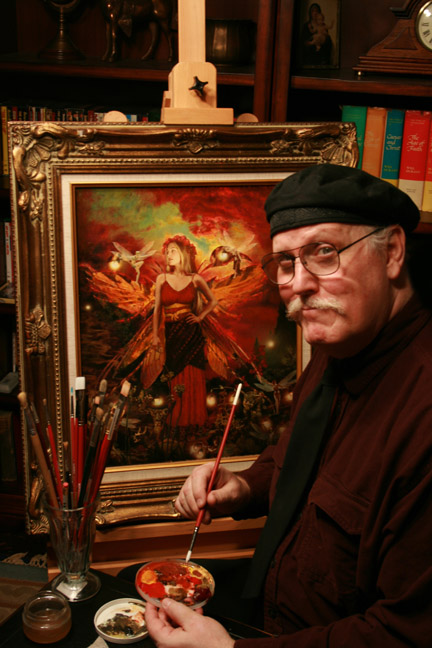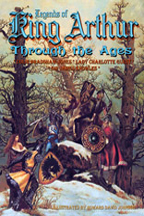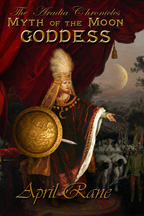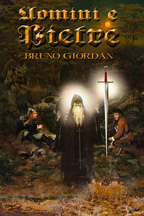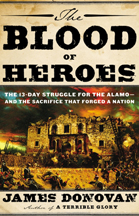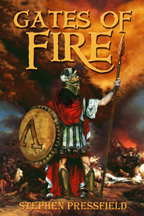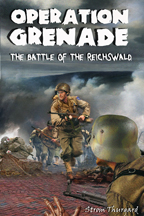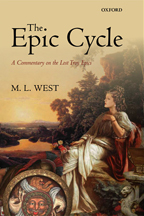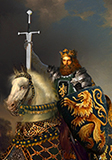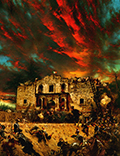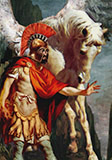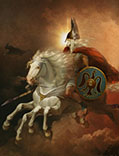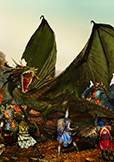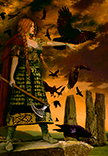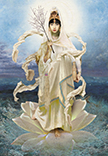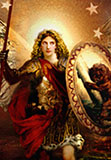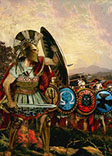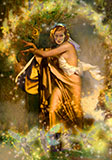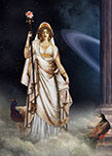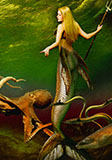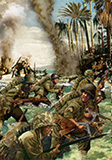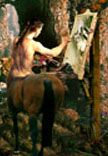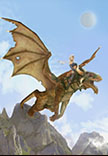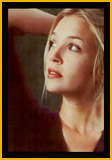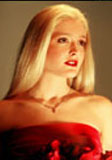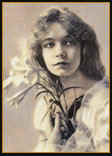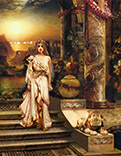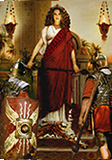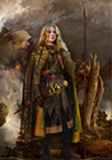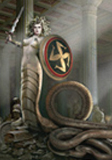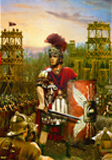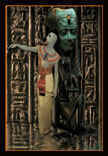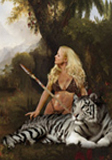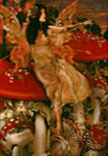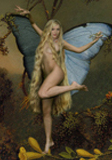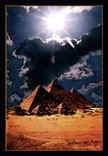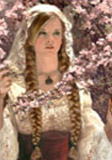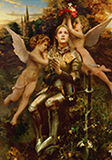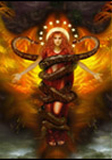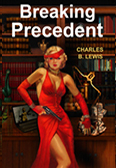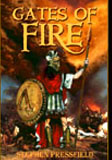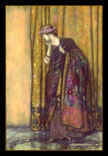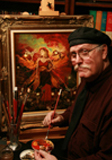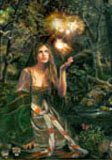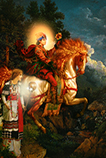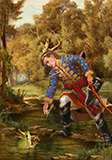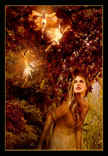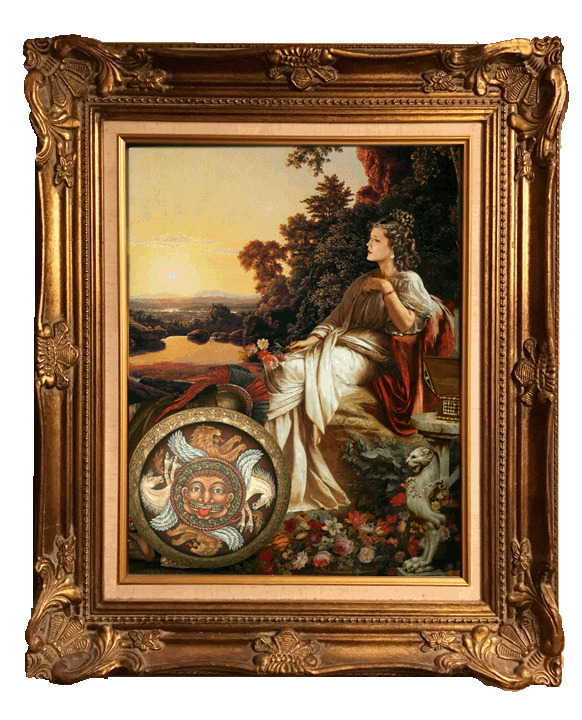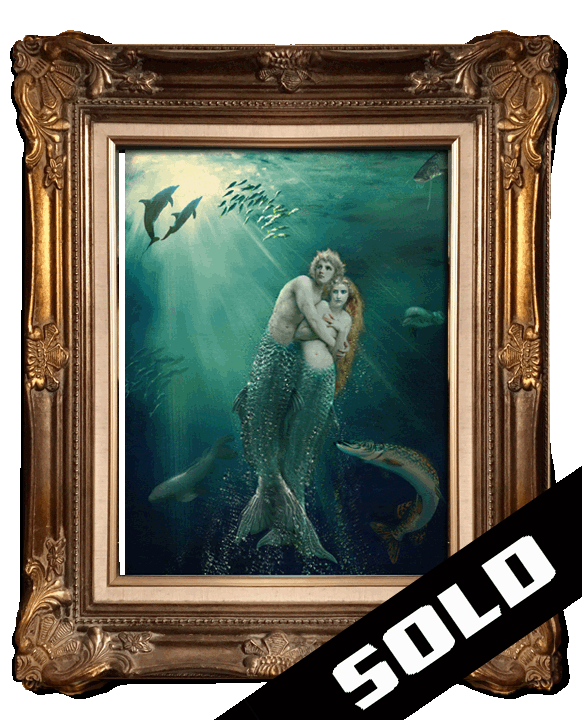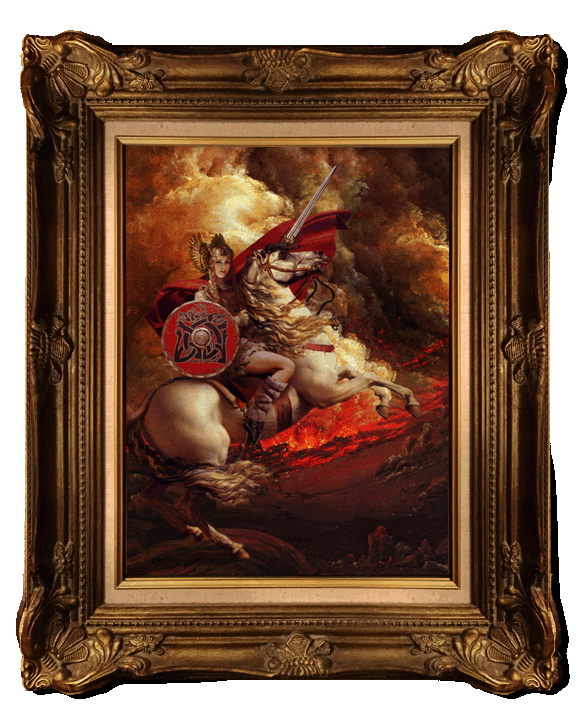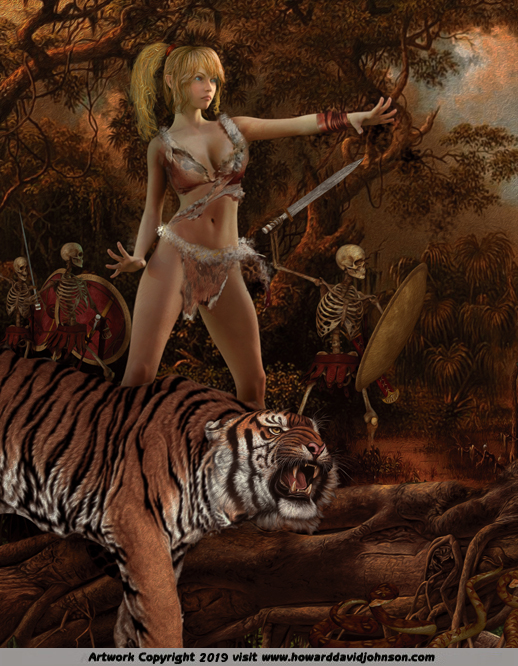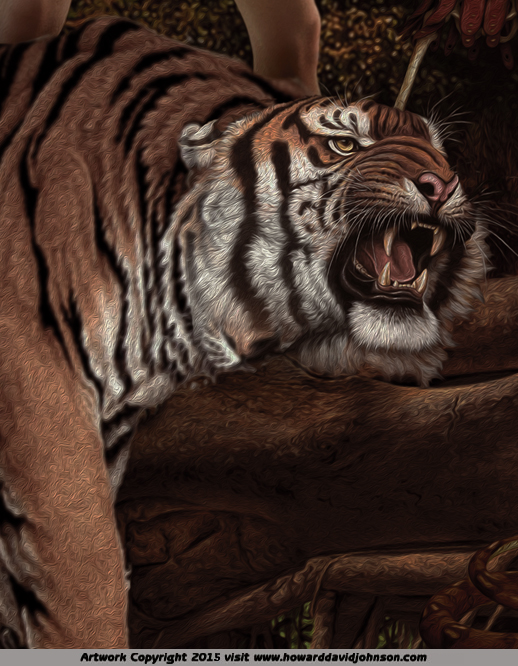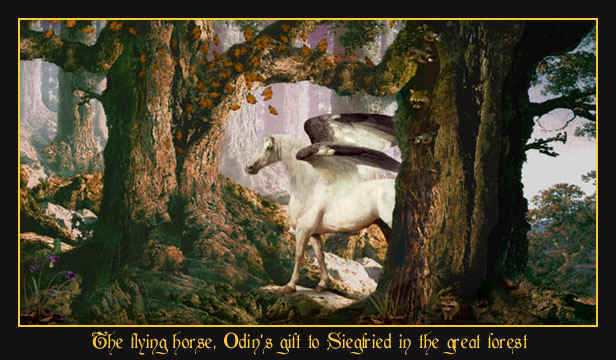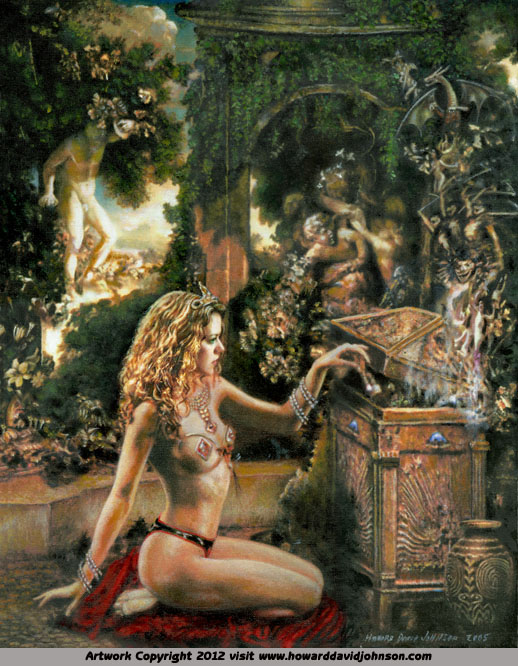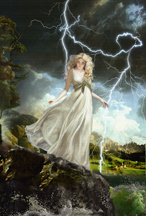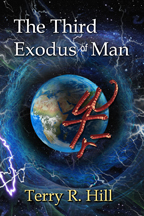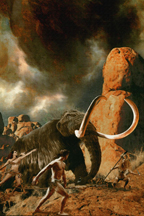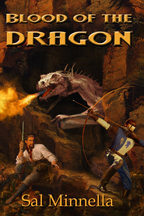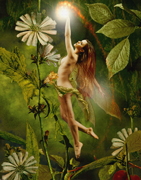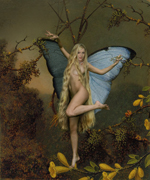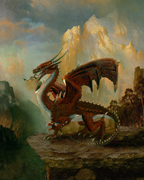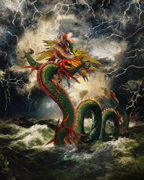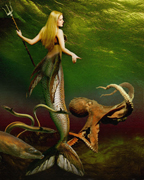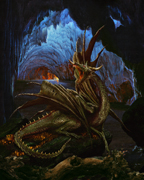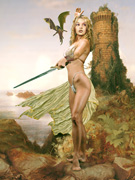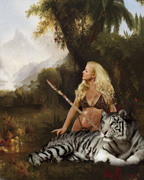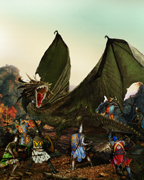|
Essay
VI
Copyright
Law and the Visual Arts in the Computer Age
An
introduction to the Millennial Copyright Act for Artists
A
brief essay on 21st century legal boundaries, guidelines, and western
art traditions by the artist
|
"All art is ultimately some form of imitation, even
if you are an expressionist painter imitating an abstract vision in
your own mind. These new visual art creations of mine take their
inspiration in part from the realistic paintings of the old masters
just as The Lord of the Rings comes from The Ring of the Nibelung and
European folklore, West Side Story came from Romeo and Juliet, which
was in turn inspired by Antony and Cleopatra. Much as Rubens copied
Titian, I copy Waterhouse and so on. Over the last 300 years, ideas
about female beauty have drastically changed and this has caused many
of the most wonderful paintings of the old masters to seem 'ugly' to
youthful modern audiences. For example, in the days of Peter Paul
Rubens, being forty to sixty pounds over-weight was considered not only
attractive, but was a status symbol. Beauty is in the eye of the
beholder and tastes have clearly changed. I feel many classic themes
need to be redone to preserve interest and appeal for future
generations. This has happened many times before as artists like Aesop,
The Brothers Grimm and Walt Disney have appropriated, modified, and
re-defined elements of our culture to preserve it for future
generations. The legality of such use today depends on whether or not
the source is protected by copyright law. You can draw or paint
Shakespeare's fairies for example and publish them without permission
but not more modern intellectual properties like characters from Star
Wars or Mickey Mouse who holds the oldest copyright dating from 1923.
Our shared cultural heritage, great
works of art, literature, music and drama, cinema, folk tales and fairy
tales are all drawn upon again and again by the creators of new works.
These works in the public domain are both a catalyst and a wellspring
for creativity and innovation. Even though all my Realistic Paintings
are legally new works and protected under copyright law their
inspiration sometimes comes in part from works in the public domain.
The public domain is a space where intellectual
property protection ( copyright ) does not apply. When copyrights and
patents expire, innovations and creative works fall into the public
domain. They may then be used by anyone without permission and without
the payment of a licensing fee. My sources have been transformed so
much in the creation of these new works of art that they would not
violate an existing copyright even if they were so protected. Publicly
owned national parks are also considered by many to be public domain
lands. Because of the recent extensions of the terms of both copyrights
and patents, and the privatization of lands and other resources owned
by the Federal Government, little is now entering the public domain.
Look for new litigation and another time extension when Disney
Corporation's Mickey Mouse copyright is due to expire in 2023. Where
would Walt Disney be without the Brothers Grimm, Hans Christian
Anderson, or Victor Hugo? Where would Aaron Copeland have been without
American folk music? Thomas Nast's Santa Claus without traditional
images of Father Christmas? Picasso without African art? These are
artists who made names for themselves and even fortunes through Public
Domain appropriation, one and all.
Some people are actually outraged that
there are some intellectual properties that corporations do not own.
They feel appropriation is only appropriate if a corporation
does it. Corporations created by public domain appropriation, now are
the most powerful force on Earth trying to put a stop to new things
entering the public domain forever through lawsuits. The public domain
is a space where intellectual property protection ( copyright ) does
not apply. It was set up by our founding fathers, who felt creativity
needed to be rewarded on a personal level for a time, and when
copyrights and patents expired, innovations and creative works would
fall into the public domain. They may then be used by anyone without
permission and without the payment of a licensing fee. Publicly owned
national parks are also considered by many to be public domain lands.
Because of the recent extensions of the terms of both copyrights and
patents, and the privatization of lands and other resources owned by
the Federal Government, little is now entering the public domain. Look
for new litigation and another copyright law time extension when Mickey
Mouse's copyright expires in 2023. This is least likely to hurt the
motion picture companies who produce new works "in house" granting
themselves permission, but the music industry which does not is being
hit very hard already. If a new song release resembles an old one, now
there is litigation.
Since the public domain is a treasure trove of
information and resources to be used by future generations, many
advocates are concerned that its stagnation will make it more and more
difficult for future generations to find creative inspiration. Art Tradition and etiquette suggest the most
influential should be mentioned at exhibits; these original Fantasy
Art pieces Shown in my exhibits take their inspiration in part
from the paintings of Waterhouse, Alma-Tadema, Moreau, Bouguereau,
Leighton, Ingres, Moore, Parrish, Rackham and others. They showcase
some of my favorite models. As a student of fine art, copying is a
great way to learn and create fine art, but as a professional fantasy
illustrator things are very different. Works done by artists out of
personal motivation belong to the artist who created them, and they can
sell licenses for divers forms of publication. The law is clear and
simple regarding illustration done for gainful employment. They are
called "work-for-hire" under the law, and such works specifically
commissioned and paid for belong exclusively to the customer and the
artist must specifically ask permission to ever legally use their own
work themselves.
My art is divided into two distinct
groups; personal work partially copying the old masters and
professional illustration applying these lessons to create totally
original works. I start more often with a specific written request.
This is the exact OPPOSITE approach to creating a picture from copying
something that's there. Research comes first. In the case of the Greek
Heroes to your left, there were no accurate sources in the public
domain to copy correct Greek armor and weapons in combat poses from.
Mostly I found scantily clad men standing around with the wrong
helmets. Finding history books at the library with the accurate
helmets, shield designs, weapons, and armor was essential to get an
accurate depiction of a Greek Hoplite. All the library had were
stiff museum poses of anything. I hit the research jackpot with some
very simplistic flat line drawings of great authentic Greek shield
designs. All the elements must be found, gathered and assembled to
create the dramatic action scene the client wanted. Next comes the
layout. This is where the mathematics and geometric design come into
the creative process. My wife, Virginia took a picture of me nearly
twenty years ago on a carpentry project with the heroic Jack Kirby like
pose I was looking for mixed with the texture and feel of a Frank
Frazetta or Norman Rockwell painting. Naturally, in these cases I go to
great lengths to make sure that my work looks nothing whatsoever like
it's various inspirations and sources except in flavor and spirit. Of
course, the characteristic old master's painting feel to the background
most of my illustrations have was requested, and the picture was to
have the flavor of a Howard Pyle painting.
With regards to use of mechanical aids to create my
fantasy art: Did you know the old masters traced? To create his
immortal "Mona Lisa" Leonardo Da Vinci used "Camera Obscura" which
is two mirrors set at 45 degree angles around the corner with
parchment over it to trace onto. Michaelangelo used a similar technique
for the Sistine Chapel. Think that makes it too quick and easy? You'll
find once you've finally got that outline done right you're a long,
long, way from being finished in any medium... if these men who set the
standard for realistic excellence used them, why shouldn't those who
come after them be permitted? Simple, because this is one of the most
carefully guarded "secrets of the old masters" and most people don't
know very much about art history... When asked why I usually work
from photos I like to re-tell Norman Rockwell's story about having to
paint a chicken: He set it up on a stump in a barn and goes to
painting. The chicken moves it's head. He moves it back. The chicken
jumps down. He puts it back. He goes to paint. now the chicken decides
to make a break for it... he chases it down clucking and screaming and
puts it back. Now it knows he's going to have it for dinner and it goes
completely berserk. The next day, he came in and set the chicken back,
snapped it's picture, and the photo held nice and still." When asked
why I usually work from photos I like to re-tell Norman Rockwell's
story about having to paint a chicken: He set it up on a stump in a
barn and goes to painting. The chicken moves it's head. He moves it
back. The chicken jumps down. He puts it back. He goes to paint. now
the chicken decides to make a break for it... he chases it down
clucking and screaming and puts it back. Now it knows he's going to
have it for dinner and it goes completely berserk. The next day, he
came in, put the chicken back up and snapped it's picture, and the
picture held completely still...
I have
built up an enormous library of original 35 mm source photos for use in
my Fantasy Art. For decades I have been seeking out the most
beautiful models and sometimes their boyfriends and bringing them in
for sessions into my photography studio. Using a strategy employed by
J. W. Waterhouse, my wistful and graceful female models cannot be
underestimated in their contribution to the stunning beauty and the
potential for lasting appeal of my work. I am always make sure to both
pay them for their time and also the rights and with the exception of
my closest friends and family who are always making cameo appearances I
get a written contract. The law with regards to rights to photography
is simple- if you own the negative you own the rights. This is the main
reason I use my own photographs. With regards to using copyrighted
material as a reference- When you have to paint a wombat you
can't fake it- you need a picture! The law understands this and
automatically grants provision - within reasonable limits; when
using copyrighted sources for reference the source image must be
sufficiently transformed in overall appearance in the translation so as
not to be what the law calls "confusingly similar"... if it's newer
than 1923 you can bet it's probably copyrighted- if it's newer than
1999 under the millennial copyright act it is automatically copyrighted
without even filing. This new law is clear and easy to understand as
well as great for creative artists and their estates, who will hold
rights for seventy years after the artists death."
~ Howard David Johnson M M I V
*****
|

